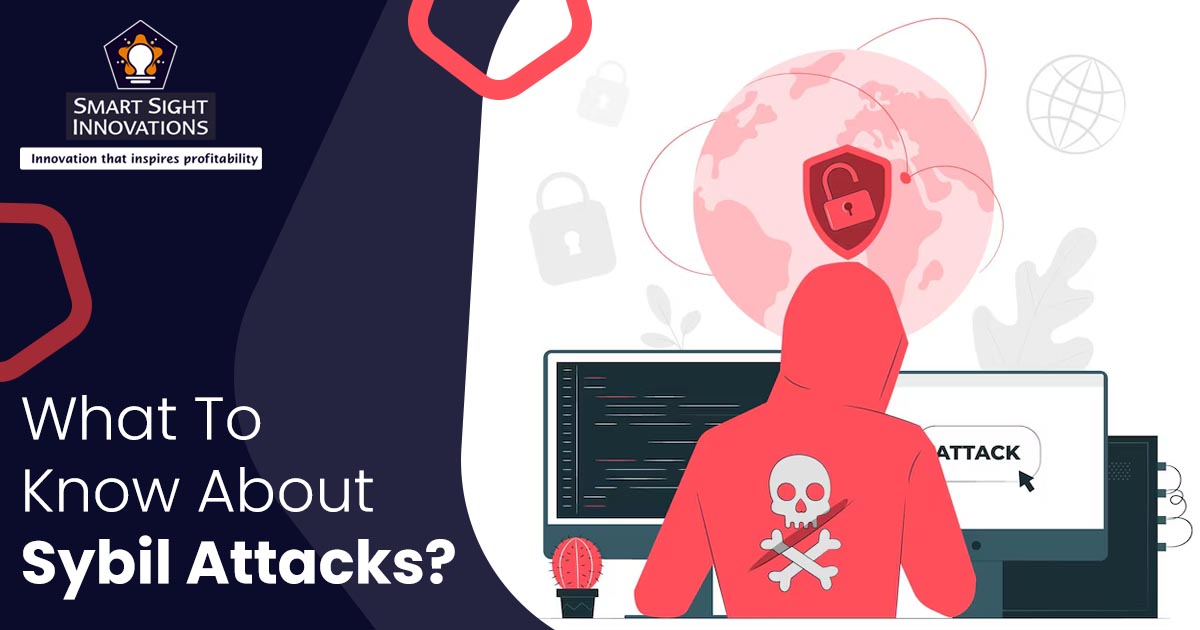
Sybil attacks pose a significant threat to decentralized networks and online systems. Named after a case study of dissociative identity disorder, these attacks involve a malicious actor creating multiple fake identities to gain disproportionate influence within a network.
This article delves into the nature of Sybil attacks, exploring their potential impacts, common targets, and the various strategies employed to detect and prevent them.
What Is a Sybil Attack?
A Sybil attack is a type of security threat in which a single adversary creates and uses multiple fake identities, often referred to as “Sybil nodes,” to manipulate or disrupt the normal functioning of a network. This form of attack is named after the book “Sybil,” which describes a woman with dissociative identity disorder or DID (an earlier medical term for this was “multiple personality disorder”).
Sybil attacks can be a serious threat to online platforms like decentralized networks, social media platforms, e-commerce platforms, online auctions, etc. By understanding Sybil attacks, we can create stronger security measures and protect online systems from manipulation.
One example of a Sybil attack is the Tor network attack. In 2014, the anonymous browsing network Tor faced a Sybil attack, wherein the attackers created fake relays, seizing control of a portion of Tor’s traffic. Their goal was to de-anonymize users or potentially intercept communication.
While the attack was partially successful, it exposed a vulnerability in anonymization networks, which is a risk of manipulation by fake nodes. This incident highlighted the ongoing challenge of maintaining anonymity online.
Mechanism of a Sybil Attack
The mechanism of a Sybil attack revolves around exploiting a system’s trust in a single user per identity. The steps involved are:
1. Mass Identity Creation
On the network that is being targeted, the attacker creates a lot of fictitious accounts. There are various ways to accomplish this:
- Automated Scripting
The attacker might write scripts that automate account creation processes, filling out registration forms with fake information.
- Botnets
Pre-existing infected computers can be utilized as a botnet, or network, to create and maintain fictitious accounts simultaneously.
- Virtual Machines/Cloud Services
Attackers might rent virtual machines or cloud services to create a large pool of IP addresses for their fake accounts.
2. Infiltrating the System
Once the fake accounts are created, the attacker needs to make them appear legitimate to bypass initial security measures. This might involve:
- Basic Information
Filling out profiles with seemingly realistic names, locations, and other basic user information.
- CAPTCHA Bypass
Simple CAPTCHAs can be bypassed with automated tools, though advanced CAPTCHAs pose a bigger challenge.
- Mimicking User Behavior
The attacker might program the fake accounts to exhibit activities similar to real users, such as browsing content or posting comments.
3. Gaining Influence
After infiltrating the system with a critical mass of fake identities, the attacker can manipulate the system for their benefit. This can disrupt decision-making or lead to unfair results.
Types of Sybil Attacks
The target system can be manipulated by different two types of Sybil attacks:
1. Direct Sybil Attack
Here, the fake identities communicate with the network’s genuine nodes directly. The attacker aims to influence the behavior of honest nodes through these interactions.
Imagine a classroom voting system where each student gets one vote. In a direct Sybil attack, the attacker creates a bunch of fake student accounts and uses them to vote for their preferred option. The honest students (real students) are directly influenced by the seemingly large number of votes for the attacker’s choice.
Some examples of direct sybil attacks are manipulating online polls, or flooding a social media platform with fake accounts to promote specific content.
2. Indirect Sybil Attack
This is a more sophisticated approach where the attacker uses intermediary nodes to conceal their control over the fake identities. The fake identities connect with honest nodes through these intermediary nodes, making it harder to identify the source of the attack.
Think of the classroom voting system again, where the attacker creates fake student accounts but doesn’t directly vote with them. Instead, they create fake teacher accounts (the intermediary nodes) and use those accounts to influence the real students. The real students might be swayed by the “teachers'” opinions, unaware that they are being manipulated by the attacker behind the scenes.
Some examples of indirect sybil attacks are spreading misinformation through seemingly independent social media accounts, or inflating reputation scores on review platforms with fake positive reviews.
Both types of Sybil attacks can be detrimental, but understanding their differences can help in developing targeted detection and prevention strategies.
Impact of Sybil Attacks
Sybil attacks can have far-reaching and severe impacts on various types of networks and systems. The consequences of such attacks can compromise the integrity, security, and functionality of the affected systems. Sybil attacks can have a major effect in the following key areas:
1. Blockchain and Cryptocurrencies
- In blockchain networks, Sybil attacks can manipulate the consensus mechanism, potentially allowing attackers to approve fraudulent transactions or execute double-spending attacks.
- If an attacker controls a majority of the network’s nodes, they can perform a 51% attack, effectively taking over the network and invalidating legitimate transactions.
- Multiple fake identities can create forks in the blockchain, leading to network instability and loss of trust among users.
2. Peer-to-Peer (P2P) Networks
- By flooding the network with Sybil nodes, attackers can drain network resources, reduce efficiency, and degrade the quality of service.
- Sybil nodes can spread false data, leading to misinformation and compromising the integrity of the information shared across the network.
- Essential services provided by P2P networks, such as file sharing and communication, can be disrupted, affecting the user experience and reliability of the network.
3. Online Communities and Social Networks
- Fake identities can be used to manipulate public opinion by posting false reviews, comments, and likes, skewing the perception of products, services, or social issues.
- The presence of numerous fake accounts can erode trust among users, leading to a decline in the credibility and reputation of the online platform.
4. Internet of Things (IoT) Networks
- Sybil nodes can overload IoT networks by generating excessive traffic, leading to network congestion and reduced performance.
- Compromised IoT devices can be used as sybil nodes, exploiting security vulnerabilities and posing a risk to the entire network’s security.
- False data generated by Sybil nodes can corrupt the data collected and processed by IoT devices, impacting decision-making and operational efficiency.
5. Ad Hoc and Wireless Sensor Networks
- In ad hoc and wireless sensor networks, Sybil attacks can disrupt routing protocols, leading to inefficient data transmission and increased latency.
- Sybil nodes can cause increased energy consumption by generating unnecessary traffic, shortening the lifespan of battery-powered devices.
- False readings and data injection from Sybil nodes might jeopardize the accuracy of data gathered by sensor networks.
What Makes Networks Vulnerable to Sybil Attacks?
Some of the factors that contribute to a network’s vulnerability to Sybil attacks are:
1. Lack of Identity Verification
- Anonymity
Networks that allow anonymous participation are particularly vulnerable because there are no stringent checks to verify the uniqueness of identities.
- Ease of Identity Creation
If creating new identities is easy and inexpensive, attackers can generate numerous fake nodes without significant cost or effort.
2. Insufficient Resource Requirements
- Low Resource Barriers
Networks that require minimal resources (e.g., CPU, memory, bandwidth) to join are more prone to Sybil attacks. Attackers can easily create multiple nodes without facing resource constraints.
- Absence of Proof Mechanisms
Networks without proof mechanisms like Proof-of-Work (PoW) or Proof-of-Stake (PoS) provide little deterrence to the creation of fake identities.
3. Decentralized and Open Networks
- Peer-to-Peer Architecture
Decentralized networks, such as P2P and blockchain networks, often lack a central authority to verify identities, making them more susceptible to Sybil attacks.
- Open Participation
Networks that encourage open participation without stringent entry requirements are easier targets for attackers seeking to introduce Sybil nodes.
4. Weak Reputation Systems
- Reputation Manipulation
Networks with weak or easily manipulatable reputation systems can be compromised by Sybil nodes, which can inflate their reputation scores through collusion.
- Lack of Trust Metrics
Without robust trust metrics, it’s challenging to distinguish between genuine and fake nodes, allowing Sybil nodes to gain influence.
5. Inadequate Detection Mechanisms
- Poor Anomaly Detection
Networks that lack advanced anomaly detection systems may fail to identify unusual patterns indicative of Sybil attacks.
- Insufficient Monitoring
Without continuous and thorough monitoring of network activity, it’s difficult to detect the presence and activities of Sybil nodes.
6. Vulnerabilities in Protocols
- Susceptible Consensus Protocols
Consensus mechanisms that do not account for the possibility of Sybil attacks can be easily manipulated. For example, certain voting-based protocols may be influenced by a large number of Sybil nodes.
- Unsecured Communication Channels
Networks with unsecured communication channels are vulnerable to interception and manipulation by Sybil nodes.
7. Social and Behavioral Factors
- Human Factors
Users’ behavior and social engineering tactics can contribute to the success of Sybil attacks. For instance, users may unknowingly interact with or trust Sybil nodes, facilitating their integration into the network.
- Lack of Awareness
A general lack of awareness about Sybil attacks and their implications can lead to insufficient protective measures being implemented.
By understanding these vulnerabilities, network designers and developers can implement stronger security measures to make it more difficult for attackers to launch successful Sybil attacks.
Prevention Techniques and Best Practices for Sybil Attacks
Preventing Sybil attacks requires a multifaceted approach that combines technical, procedural, and educational measures. Some of the most effective techniques and best practices to protect networks from Sybil attacks are:
1. Identity Verification Mechanisms
- Digital Certificates
Verify participant identities using digital certificates. Public Key Infrastructure (PKI) can help ensure that each participant has a unique and verifiable identity.
- Two-Factor Authentication (2FA)
Implement 2FA to add an extra layer of security, making it harder for attackers to create multiple fake identities.
2. Resource Testing
- Proof-of-Work (PoW)
Make it necessary for participants to solve complex computational puzzles to join the network. PoW makes it resource-intensive for attackers to create multiple identities.
- Proof-of-Stake (PoS)
Use PoS to have users stake a particular quantity of resources (such as cryptocurrency) to access the network. This ties the creation of new identities to a financial cost.
3. Reputation Systems
- Trust Scores
Implement reputation systems that assign trust scores based on the behavior and history of participants. Nodes with higher trust scores are given more influence.
- Reputation Accumulation
Require new identities to accumulate reputation over time, making it harder for attackers to quickly gain influence with new Sybil identities.
4. Anomaly Detection and Monitoring
- Behavioral Analysis
Continuously monitor network activity to identify abnormal patterns that may indicate a Sybil attack.
- Thresholds and Alerts
Set thresholds for certain activities (e.g., the number of new identities created in a short period) and trigger alerts when these thresholds are exceeded.
5. Secure Communication Protocols
- Encryption
Use encryption to secure communication channels, preventing attackers from intercepting and manipulating data.
- Authentication
Implement strong authentication protocols to verify the identities of participants before allowing them to communicate or perform actions within the network.
6. Network Design Considerations
- Randomized Voting
In consensus-based systems, use randomized voting to reduce the influence of Sybil nodes. Only a randomly selected subset of nodes participate in decision-making processes.
- Node Diversity
Encourage diversity in node operators and locations to make it harder for attackers to control a significant portion of the network.
7. Economic and Resource Constraints
- Participation Fees
Require participants to pay a fee to join the network. This creates a financial barrier for attackers attempting to create multiple identities.
- Rate Limiting
Implement rate limiting to control the number of actions a single node can perform within a given time frame, reducing the impact of Sybil nodes.
8. Community and Social Measures
- User Education
Educate users about the risks and signs of Sybil attacks, promoting awareness and vigilance.
- Community Policing
Encourage the community to report suspicious activities and identities, leveraging collective vigilance to identify and mitigate Sybil attacks.













